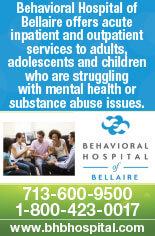
By Abimbola Farinde, PharmD
Anxiety disorders are recognized as one of the most common psychiatric problems in the United States except for substance abuse. Anxiety disorders can lead to physical symptoms which account for many primary care visits each year. As it currently stands, anxiety disorders are under-recognized and untreated in the medical community and this continues to cause significant stress and distress for many sufferers. According to the Diagnostic and Statistical Manual of Mental Disorder, 5th edition, (DSM-V), anxiety disorders are classified into specific categories to include generalized anxiety disorder, panic disorder, obsessive-compulsive disorder, post-traumatic stress disorder, social phobia, specific phobia, , acute stress disorder as well as anxiety disorders due to a general medical condition, substance-induced anxiety disorder. There are proposed hypothesis for the pathophysiology of anxiety disorders which some theorizing that it involves the interaction of biopsychological factors that include genetic vulnerability that can cause stress or trauma in certain situations. Also, it has been noted that there are specific mediators of the symptoms of anxiety disorder such as the neurotransmitters norepinephrine and serotonin, and peripherally, the autonomic system has the ability to mediate many of the classical symptoms of an anxiety disorder.
Firstly, generalized anxiety disorder is considered to be the most common of the anxiety disorder and it is characterized by an unrealistic or excessive anxiety and/or worry about two or more life circumstances for at least six months. The clinical features of generalized anxiety disorder seems to be comparable to many of the other anxiety disorder due to the fact its manifestations consist of insomnia, irritability, trembling, dry mouth, or clammy hands to name a few. A panic disorder basically consists of an intense fear or impending doom that is intolerable and unbearable, obsessive-compulsive disorder is based on the presence of obsessions (recurrent and persistent thoughts, impulses, images) and compulsions (repetitive behaviors or actions). Also, social phobia (formerly known as social anxiety disorder is characterized by an individual having a marked and persistent fear of social or performance situations and the exposure inevitable provokes anxiety that can take the form of a panic attack. Specific phobia is defined as having a marked and persistent fear that is excessive with the types of phobias pertaining to animal, natural environment, blood-injection injury, or situational phobias (i.e. airplanes, elevators, or enclosed spaces. Lastly, post-traumatic stress disorder typically occurs when an individual is exposed to a traumatic event that is associated with intense fear or horror, and the person persistently experiences the event in the form of nightmares, flashbacks, or intense distress. When it comes to treatment of anxiety pharmacological agents (i.e. selective serotonin reuptake inhibitors) are considered to be first line treatment but based on the fact that they have a slower onset of action, benzodiazepines may be given in situation of acute anxiety due to their rapid onset of action. The use of benzodiazepine are not recommended for the management of chronic anxiety disorders but only for acute anxiety reactions for about 2-6 weeks of therapy and once the antidepressant starts to work the benzodiazepine can be tapered off. Along with pharmacotherapy, psychotherapy, cognitive/ behavioral therapy, support groups, and family therapy can be instrumental in treating the symptoms of anxiety disorders. The use of pharmacotherapy combined with cognitive or behavioral therapies have been found to be the most effect treatment for certain types of anxiety disorders.
While there are few psychotropic medications that are currently approved for use in children, some of the antidepressant are used off-labeled in children. Fluoxetine (Prozac) is approved for use in children to treat depression and selective serotonin reuptake inhibitors are considered to be first-line therapies for anxiety disorders so this could have been an option that the could have also explored as an intervention. The use of pharmacological intervention should not be automatically withheld as they have demonstrated positive outcomes in treating anxiety disorders even though few studies have been conducted in children this should not prohibit their use.







